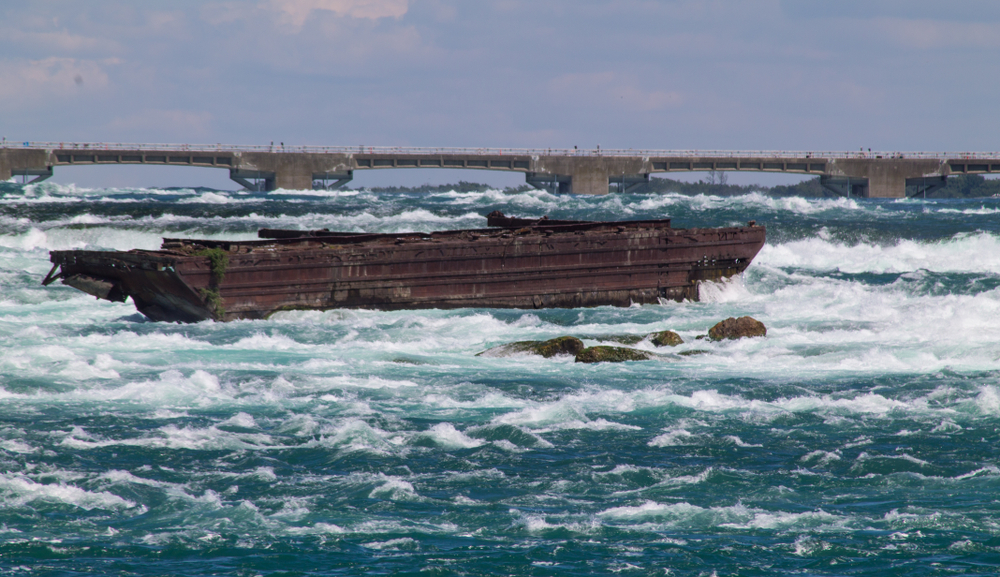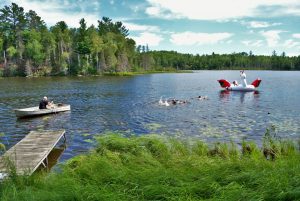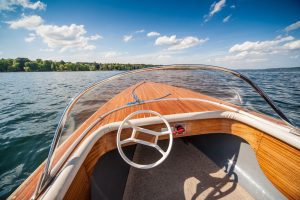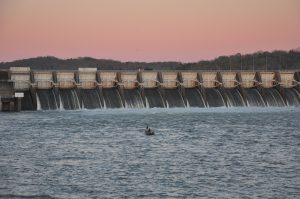The Great Lakes are important not just for fishing but also for marine transportation. Unfortunately, over several decades, more than 6,000 vessels navigating these lakes have sunk or crashed.
Even more horrifying is the information from the Great Lakes Shipwreck Museum (yes, there’s such a place) that upwards of 30 thousand people also lost their lives due to those shipwrecks.
Some of the ships are yet to be found, even with teams and solo shipwreck hunters searching for them over the years. You might be curious, based on all this information, which Great Lake is responsible for the most shipwrecks.
After in-depth research, we’ve listed the four Great Lakes with the most shipwrecks along with some chilling stories of the wrecks themselves.
Table of Contents
1. Lake Erie
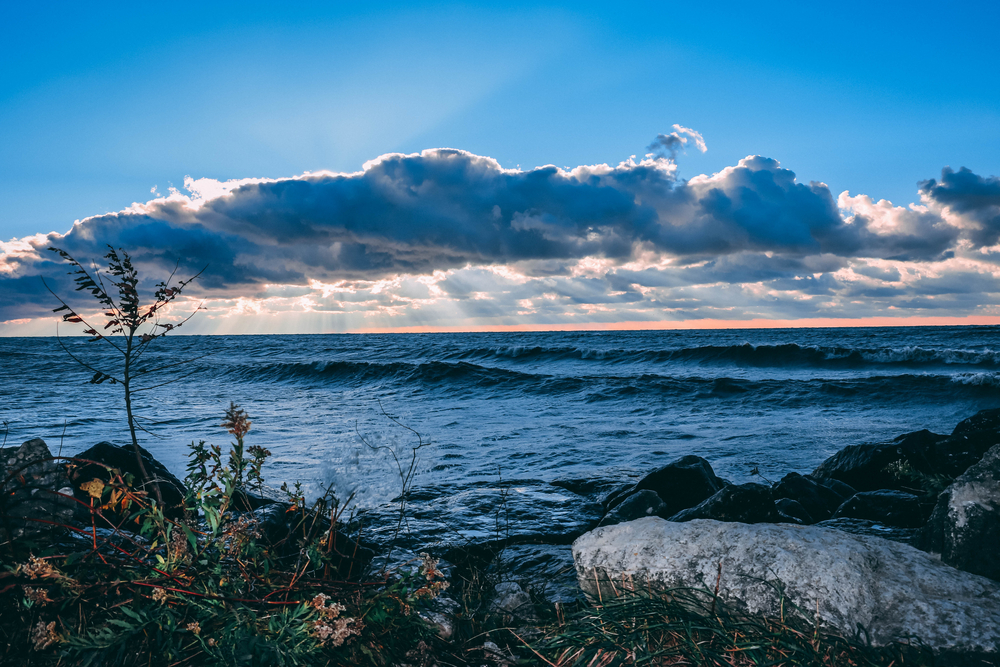
Even though all the Great Lakes have shipwrecks, Lake Erie, the shallowest of the Great Lakes, has the highest concentration. Given the name, however, it’s unlikely that anyone would be surprised. Divers have only discovered a fifth of the ships that have sunk over the years.
Lake Erie is home to more than 2,000 shipwrecks, making it one of the world’s most wreck-rich areas. Fewer than 400 wreckage discoveries have occurred in Lake Erie’s tidal basin. Schooners, freighters, steamships, tugs, and fishing boats are just a few types of vessels that have wrecked on Lake Erie.
Lake Erie is also home to many well-known shipwrecks. Here are two:
The Lake Serpent: The Lake Serpent sailed from Cleveland to the Lake Erie islands in September 1829 on a 47-foot schooner to collect limestone. The ship’s crew set sail to return to Cleveland with its cargo, but that’s as much as is known about the boat and its crew’s untimely end.
Even though the ship never returned, searchers found the bodies of Captain Ezera Wright and his sibling Robert in Lorain County, Ohio – about 100 miles to the west of Cleveland. The Lake Serpent has never been found, vanished forever in the depths of Lake Erie.
The Favorite: According to a Monroe History book, the Schooner The Favorite was one of many that disappeared in Lake Erie. Sources differ significantly on the actual date of the ship’s sinking, but according to Bulkley’s book published in 1913, it was in November of 1853.
Captain Wilkie of Buffalo was The Favorite‘s owner, and it sailed under the command of Captain Wheeler, a famous figure in Monroe.
A history book claims that the voyage occurred toward the end of the shipping year. Many shipments arrived late from the consignors, and several crew members declined to sail because of their concerns regarding the lake’s unpredictable weather at that time of year.
The ship sailed away as soon as the company put its crew together. The boat, however, encountered bad weather as soon as it was in open waters. The captain pushed through it with determination. From Buffalo, the vessel headed to Toledo.
One history book from 1913 claims that it left Buffalo on November 12th of that year. After a week of rough seas, snow, ice, and winds of 39 mph, the crew finally saw Raisin Point.
The shoreline was hazardous and uninviting, covered in an ice field. Winds were pushing the ship toward the ice, and there was nothing the crew could do to stop it as the light of the sun quickly dwindled.
The crew hastened their process of disembarking the ship. The storm’s waves were “mountain high,” according to the locals. Every man had an oar as he entered the dangerous ice field after leaving the ship in small boats.
They could see The Favorite pitching first, and then sinking into the lake as they looked back.
There were two groups of survivors, tied together by ropes with a void in between them. If one of them slipped on the ice, the others could help them out. As it turned out, everyone but the captain had fallen through the thin ice at least once before being saved by everybody else.
The men eventually made it through the blizzard to shore. Purple took care of them at the United States Hotel in Monroe, where they were fed and given a place to stay. Amazingly, the entire crew survived the ordeal.
2. Lake Michigan

On Lake Michigan’s sandy bottom, there are nearly 1,500 shipwrecks, several of which date back to the 1800s. All that’s left of these vessels now are hardwood ridges, frames, and memories.
As much fun as sailing, snorkeling, and fishing is on Lake Michigan, it has historically played an essential role in transporting freight and shipping goods. The waterways were regular paths for tugboats, schooners, and barges transporting cargo from one port to the next.
Divers have discovered numerous shipwrecks in the lake’s depths, some missing boats whose disappearances were unexplained for decades. The wrecks have since been searched, helping to piece together some of the stories. Here are four notable tales about wrecks found in the depths of Lake Michigan:
Lady Elgin: The September 8, 1860, capsizing of the Lady Elgin led to the largest number of open water fatalities in the Great Lakes. The 129-foot schooner Augusta plowed the 252-foot hardwood hulled steamship at 11 knots in a mighty windstorm.
Despite Augusta‘s second mate supposedly spotting the Lady Elgin 30 minutes before the crash, the schooner didn’t attempt to make a course correction until 10 minutes before the collision occurred.
Carl Bradley: A freighter and an icebreaker, the Carl Bradley transported dolomite from Lakes Superior and Huron to the deep-water ports of Lake Michigan. The Carl Bradley sustained hull damage in a collision with the MV White Rose in 1957 on the St. Clair River.
The cargo vessel and its crew perished in 1958 as a result of the structural damage from the collision, according to reports. It was late on November 18th when a powerful gale-force storm hit the Carl Bradley while coming back from Gary, Indiana, and moving north along upper Lake Michigan.
The storm pummeled the huge freighter ’til 5:30 p.m., breaking the hull in two from the force of the 65-mph winds and 20-foot-high waves.
However, despite three mayday radio calls before the storms ripped the transmission lines, the Carl Bradley sank well before the assembly of a relief team. A mere two of the ship’s 35 crew members were able to escape alive.
Alpena: Great Lakes steamboat Alpena carried passengers and cargo throughout the Midwest from 1866 to 1868. The ship’s dual 24-foot side rollers and semi-transparent engine made it stand out from the crowd.
The weather was ideal when the ship sailed from Grand Haven, Michigan, at 10:00 p.m. on October 15th, carrying passengers and apples and headed straight to Chicago – a distance of 108 nautical miles.
As soon as the ship was underway, the crew noticed a shift in the wind direction, which indicated the approaching threat of a thunderstorm. According to the veteran captain, he believed the Alpena would make it to Chicago before the storm got going. He was proven dead wrong a few hours later.
By 3:00 a.m., the temperature had already fallen to minus 40 degrees, and gale-force wind gusts, snow, and ice were battering the lake. Early in the morning, a storm-tossed wave subsequently smashed into the Alpena. The ship had sunk by the time rescuers found it.
The steamer’s damage was so bad that the wreckage and bodies of those who died on board were strewn over 70 miles of coastline.
Appomattox: The SS Appomattox was a 319-foot wooden ship with a sturdy hull and a gigantic triple advancement steam engine. It was one of the most prominent Great Lakes naval vessels ever built.
Until the night of November 2, 1905, the ship transported metals and coal to docks all over the Midwest.
Off the coast of Wisconsin, the massive wooden steamer was obscured by haze from the hectic port of Milwaukee as it carried a full cargo container of coal. The Appomattox ended up marooned on the waters.
Even after two weeks of attempting to free the ship, the crew could not, and it was left to rot. One hundred fifty yards from the shore in Shorewood, Wisconsin, near Milwaukee, the Appomattox is submerged in 15 to 20 feet of water, but it’s amazingly well-preserved.
You’ll most likely come upon a shipwreck if you reside near Lake Michigan. You can learn about the submerged ships thanks to Wisconsin Shipwrecks, a website that records maritime discoveries with the assistance of the Wisconsin Historical Society.
3. Lake Superior
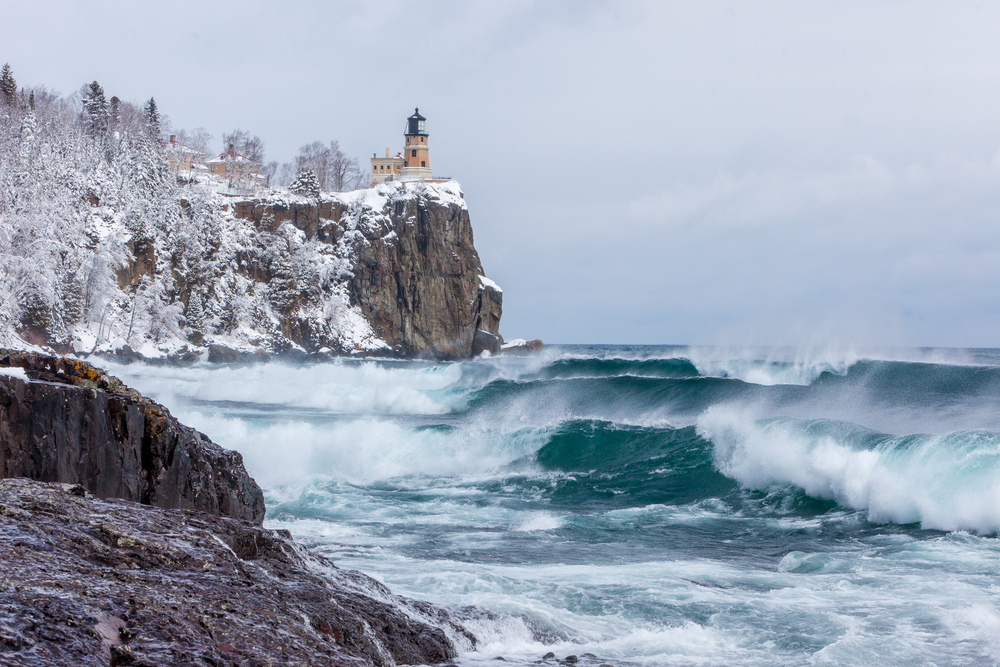
There are an estimated 550 shipwrecks in Lake Superior, the majority of which remain undiscovered. Between Whitefish Point and Munising, a dangerous 80-mile expanse of Lake Superior’s Shipwreck Coast is home to approximately 200 shipwrecks. Here are the stories of the seven of them.
Edmund Fitzgerald: One of the most well-known Great Lakes shipwrecks in history was the massive freighter Edmund Fitzgerald, which became a legend due to the haunting song by Canadian Gordon Lightfoot – “The Wreck of the Edmund Fitzgerald”.
On November 10, 1975, a significant storm on Lake Superior sank the Fitzgerald. The 29-person crew died as a result of the incident. The Fitzgerald had been the largest ship in the Great Lakes until it wrecked.
It’s still the largest ship to have sunk on the Great Lakes, according to historical records. Ernest McSorley, a seasoned captain and Toledo resident at the time of his death, was the captain of Edmund Fitzgerald.
SS Bannockburn: In 1902, the SS Bannockburn, a Canadian steel-hulled freighter, vanished without a trace off the coast of Newfoundland. Its disappearance is one of Lake Superior’s greatest mysteries, as no trace of the ship has ever surfaced. Since she vanished, many sailors have reported seeing her sailing through the darkness during bad weather.
The SS Western Reserve: This ship sank off Deer Park, Michigan, on August 30th, 1892. It was among the first steel-plate lake cargo ships at 301 feet long and 41 feet wide.
Only one person present, wheelsman Harry Stewart, made it to shore between Grand Marais and Deer Park, where mariners rescued him.
The Hudson: On September 16, 1901, the Hudson, a propeller ship sailing from Duluth with a cargo of flax and wheat, capsized off the coast of Keweenaw Point. The boat, constructed in Detroit in 1888 and measuring 288 feet in length, was a well-known figure on the lake.
She sank in a fierce gale, probably due to cargo shifting, which was common with flax. The ship’s remains have vanished without a trace.
The SS Henry B. Smith: This was a 525-foot-long, 55-foot-wide, and 31-foot-high steel-hulled freighter. On November 9th or 10th, 1913, during the Great Lake Storm – one of the most significant storms ever recorded on the Great Lakes – the ship went down.
It occurred near Marquette, Michigan while the ship was transporting iron ore from Canada to Cleveland, Ohio. The shipwreck claimed the lives of all 25 people who were aboard.
SS Emperor: A storm in 1947 claimed the lives of all 12 people aboard the SS Emperor, a massive, steel ore steamer measuring 525 feet in length. The captain and first mate were among those who perished.
SS Kamloops: The Canada Steamship Lines freighter went down on December 7th, 1927, three years after its launch. The SS Kamloops sank with the loss of all 22 crew members. Last seen on December 6th, the Kamloops was en route to Isle Royale and heavily ice-coated.
4. Lake Huron
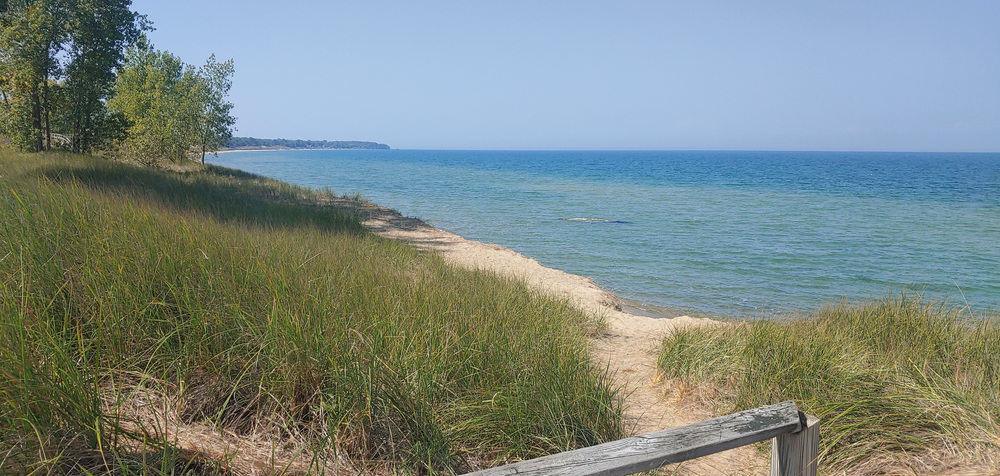
Thunder Bay is home to the majority of Lake Huron’s shipwrecks. Close to 100 iconic shipwrecks off the Michigan shoreline are protected by Thunder Bay National Marine Sanctuary, a national treasure.
The sanctuary works to preserve these underwater treasures for future generations through research, education, and involvement from the local community.
For the last 200 years, the Great Lakes maritime transportation industry has been represented in Thunder Bay by the shipwrecks that have sunk in the area. The artifacts in the collection show the evolution of ship design and construction over time.
Thunder Bay National Marine Sanctuary is home to hundreds of shipwrecks, including the D.M. Wilson. Here are some of their stories:
D.M Wilson: With a cargo of coal on board, the D.M. Wilson was sailing for Milwaukee when it developed a leak and began to sink.
Despite being towed by the steamers Hudson and Samuel Mitchell, it sank two miles from Thunder Bay Island in water 40 feet deep. A fourth ship came to their aid and rescued the survivors.
Ten days later, a gale tore apart the D.M. Wilson, sending debris down as far as Tawas, Michigan. Later on, a large amount of the machinery from the ship was salvaged and used again. However, despite the storms and the salvaging, much of the hull of the D.M. Wilson is still intact, including a large windlass on the bow.
The Cedarville: This ship left Port Calcite, near Rogers City, early on May 7, 1965, bound for Gary, IN, with 14,411 tons of limestone and a crew of 35 onboard. As they approached the Straits of Mackinac, the fog grew thick, ultimately leading to the Cedarville‘s demise.
The Cedarville could not communicate properly and ran into the Norwegian ship Topdalsfjord on its port side, where she suffered significant damage between the seventh and eighth hatches.
The captain of the Cedarville attempted to beach the ship near Mackinaw City after briefly dropping anchor to assess the situation.
Ahead of the Mackinac Bridge south tower, however, the Cedarville went down, sinking into 105 feet of water after suddenly rolling over to starboard at 10:25 a.m.
Twenty-five crew members were rescued alive from the frigid lake, along with two who died from exposure and eight who perished along with the ship. One of the crew members remains missing.
To this day, the ship has stayed intact in the lake in an almost entirely overturned position. Because of this, the Cedarville is a popular diving location in the Mackinac Straits. Maritime officials warn would-be divers not to venture too close without the proper training and gear.

